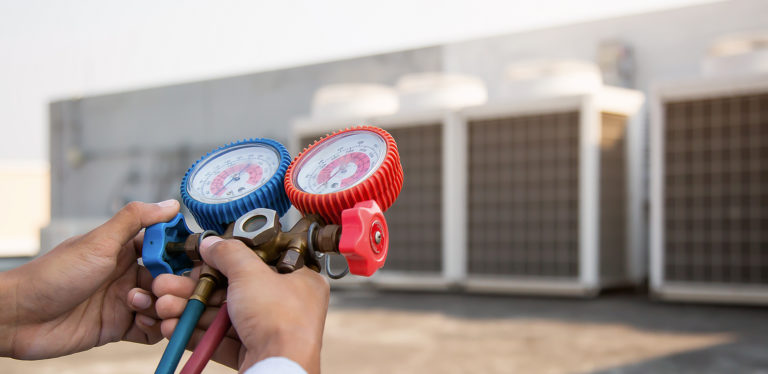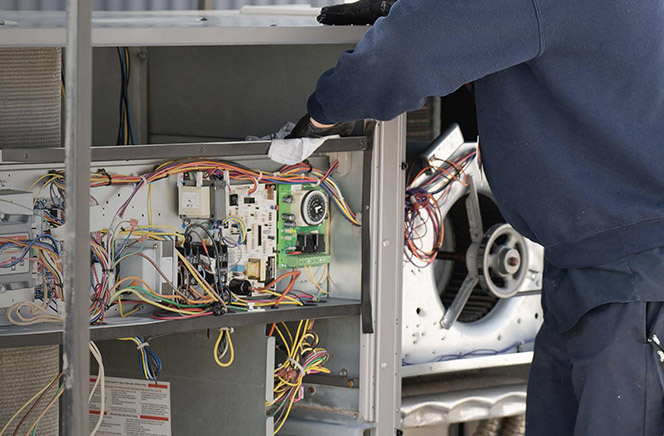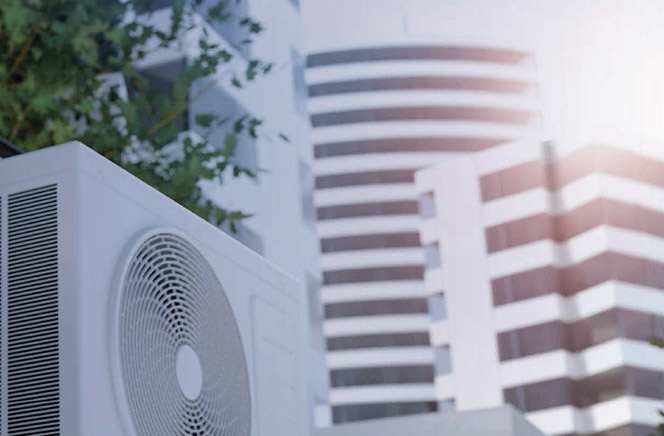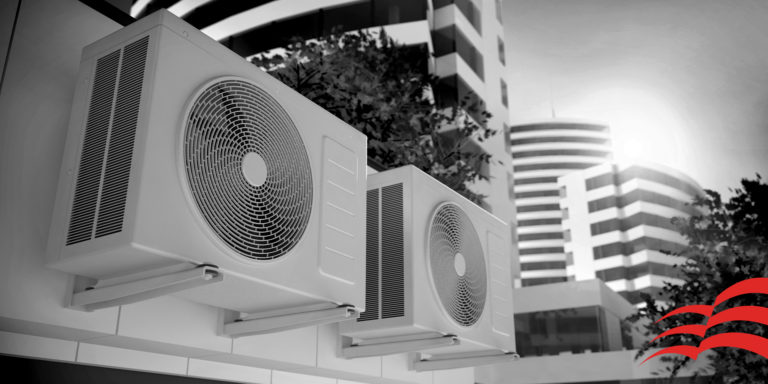
Basic Maintenance
A well-maintained HVAC system is much more affordable to operate than a neglected and overused system. Maintenance should be preventative to address issues before they happen or while they’re still small enough to be dealt with swiftly and affordably. Typically, preventative maintenance will include:
- Filter changes
- System cleaning
- Inspecting and tightening moving, such as blower belts
- Oil changes
- Lubrication of moving parts
- Minor adjustments to the machinery as needed
- Addressing refrigerant and heating components seasonally
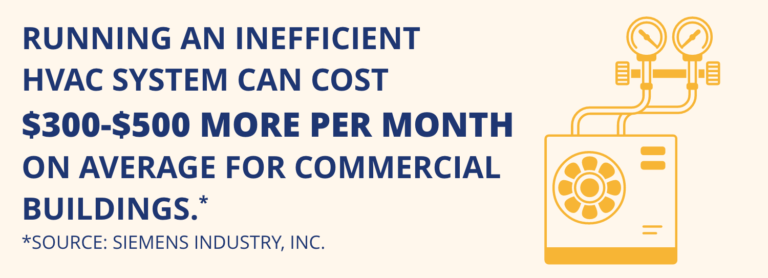
According to the Department of Energy, heating and cooling costs make up about 40% of the average commercial building’s energy budget. Sometimes, the most cost-effective approach might be to upgrade the entire system. There are guidelines put in place by organizations like Energy Star to help you decide if the time is right. You may need to upgrade if:
- The unit is ten years old or older
- There is a noticeable energy bill increase
- It needs frequent repairs (beyond what is expected with proper maintenance)
- There are noticeable dust or humidity issues
- Specific areas and rooms struggle to maintain proper temperature
Seasonal Requirements
Every HVAC unit is expected to fight rising temperatures in the summer, keep things comfortable in the winter while withstanding the freezing conditions, prevent mold growth in spring and fall, and help combat allergies for the people inside your buildings. That’s a lot to ask of any system. Connecting with an HVAC certified specialist for inspection and recommended upkeep is a lot like getting a car’s oil changed—it keeps everything running just the way it should. October and May are when most general repair requests come in. June through August see the most AC repair calls, and November and December see the most heating repair calls. Staying proactive keeps you ahead of a busy technician’s schedule.
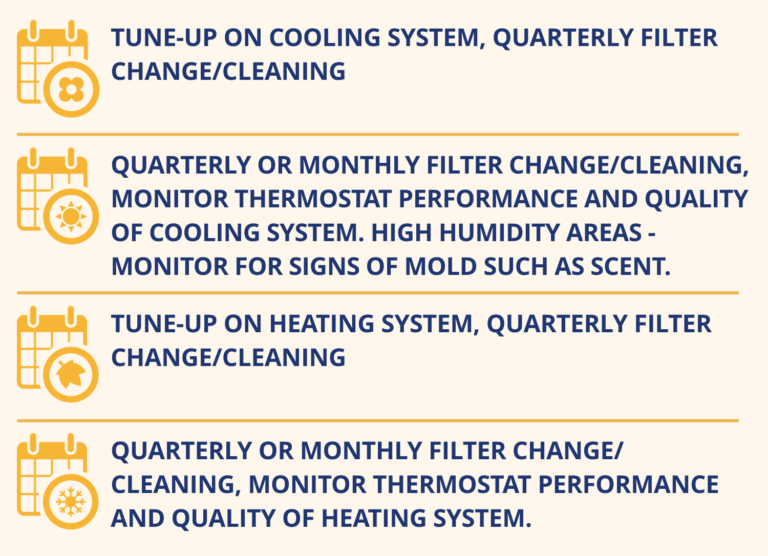
When seasons change, ensure the thermostat is functioning correctly and programmed appropriately to keep energy costs within budget. Upgrading to a smart, energy-efficient thermostat may be the best choice for your property. Many models allow you to adjust the settings remotely, keeping energy bills reasonable while the property is empty. For businesses and commercial properties, smart thermostats also provide more control over your buildings and offer customization to meet each tenant’s different needs.
Upcoming Live Webinar

HVAC in Hospitals and Healthcare
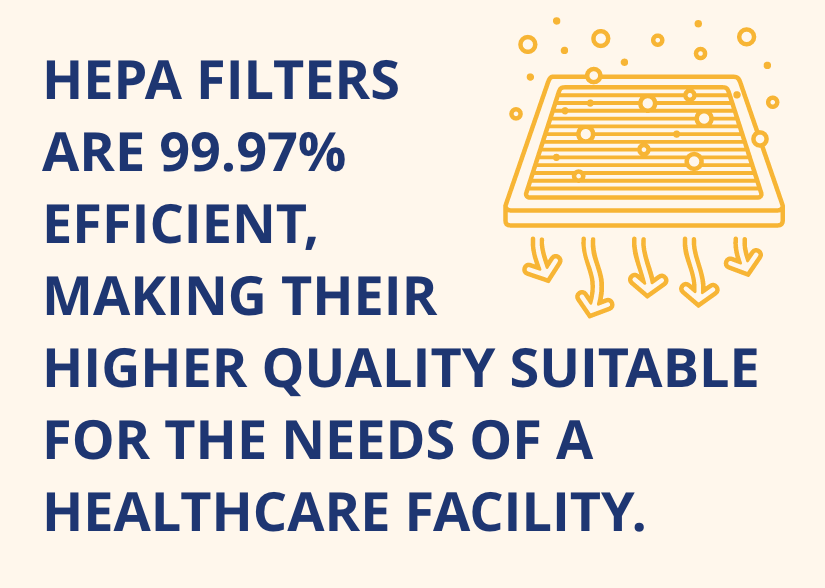
Hospitals and healthcare facilities require a more stringent process, such as more refined temperature and humidity controls to protect delicate machinery, high-efficiency particulate air (HEPA) filters, and negative air pressure rooms and system isolation. Filter changes also mean making sure that HEPA filtration is in the unit. It is essential to monitor air pressure, indoor air quality (which can have different needs in different areas of the facility), airflow rates, and air exchange rates in critical areas. The standard for a hospital is 14-16 air changes per hour.

Coordinating maintenance and repair in a healthcare setting also relies on increased involvement in planning and timing of service to prevent disruptions to 24/7 patient care and protect patient health. Most healthcare facilities require HVAC maintenance, cleaning, and repairs to be performed at night. In some areas, work may only be scheduled when the weather is cooler. Typically, air handling units can only be shut down for maintenance for an average of 4 hours before the temperature begins to change within the envelope of a building.
Reputable restoration firms follow national standards for inspecting units across the board, as set by the National Air Duct Cleaners Association (NADCA). In health care, units are inspected annually. Cleaning and filtration inspection should be performed quarterly. Different cleaning intervals are recommended for different units, although most hospitals follow NADCA’s standards for patient health.
A majority of the maintenance for a healthcare facility follows residential and commercial guidelines. Key differences and common practices include:
- Using vacuum equipment that exhausts particles outside the building or using only HEPA vacuuming equipment if the vacuum exhausts inside
- Utilizing proper levels of containment and pressure differentials, as needed
- Using appropriate tools and agitation equipment designed for ventilation system cleaning
- Leaving work areas tidy, sanitized, and decontaminated at the end of each shift and/or end of a job
- Thoroughly communicating and documenting findings, concerns, and job status to minimize disruptions
Next Steps
These are just a handful of routine HVAC maintenance actions that will extend the life of your heating and cooling system to help eliminate or cut down on expensive repairs in the future. Staying on top of cleaning, energy efficiency, upgrades, and seasonal needs are ways to promote health and comfort for building occupants all year round. Contact a qualified HVAC firm like ATI to have a technician perform general maintenance and help diagnose any potential issues.
